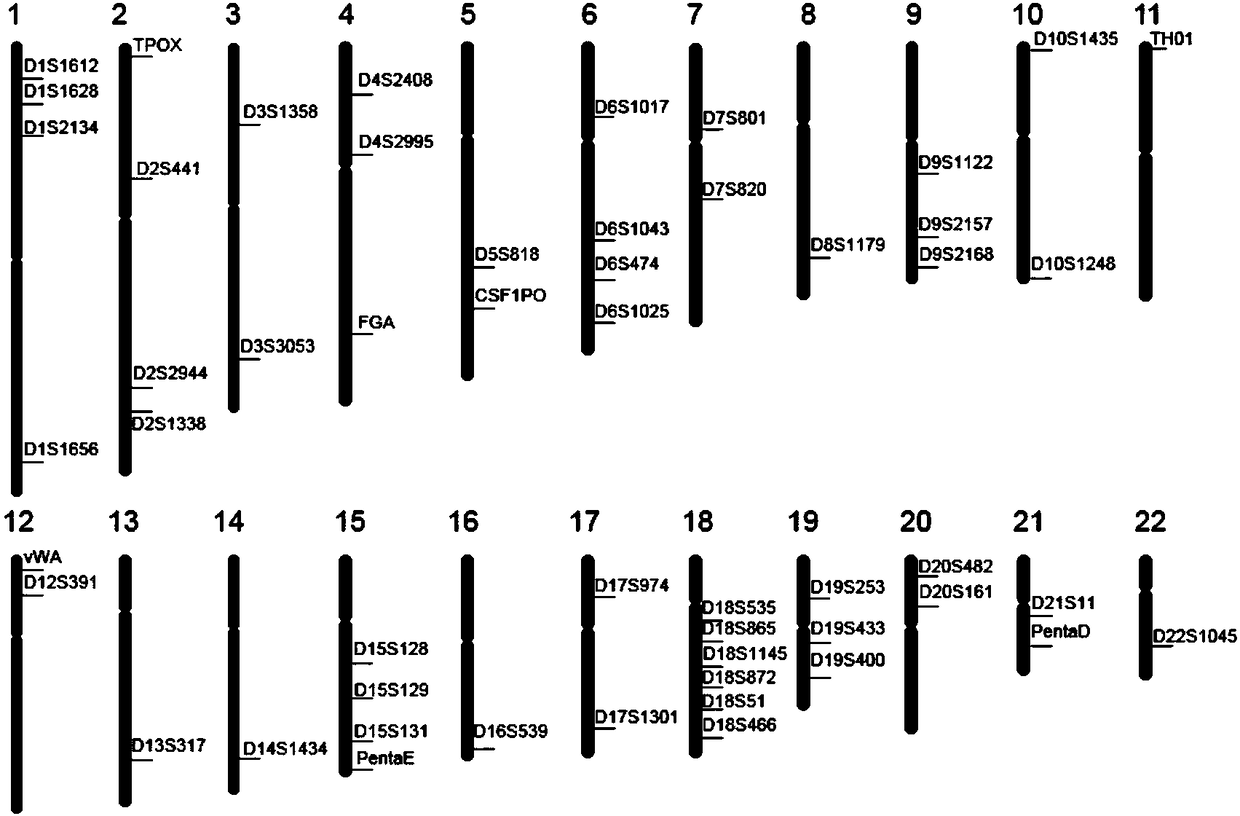Individual recognition system based on next generation sequencing and kit and application of kit
A second-generation sequencing and kit technology, applied in the field of genes, can solve the problems of high price, long PCR product length, insufficient compatibility, etc., and achieve the effect of reducing operation steps, high sensitivity, and shortening experimental time.
- Summary
- Abstract
- Description
- Claims
- Application Information
AI Technical Summary
Problems solved by technology
Method used
Image
Examples
Embodiment 1
[0087] This embodiment provides an individual identification system based on next-generation sequencing. The individual identification system genotypes a male sample and detects the blood type.
[0088]The blood was donated by male volunteers, and the serological test showed blood type B. The DNA template was extracted with the chelex-100 method, and the primers were synthesized by a company and mixed according to a certain ratio to form a primer mixture. Take the primer mixture, DNA polymerase Mix, etc., and configure the reaction system according to Table 8. Set up a thermal cycler (ABI Veriti PCR instrument) according to the reaction conditions in Table 9, and put the PCR reaction tube into the instrument for PCR amplification. After the amplification reaction is completed, take out the reaction tube and use Ultra TM DNALibrary Prep Kit for Library preparation kits to prepare DNA libraries. Take the PCR purified product, according to Ultra TM DNA Library Prep Ki...
Embodiment 2
[0101] This embodiment provides an individual identification system based on next-generation sequencing. The individual identification system genotypes a female sample and detects the blood type.
[0102] The blood was donated by female volunteers, and it was type A blood by serological test. Template DNA was extracted by chelex-100 method. The amplification reaction was carried out on an ABI 9700 thermal cycler with Ultra TM DNA Library Prep Kit for The library preparation kit was used to build the library, and the Illumina Hiseq 4000 was used for sequencing.
[0103] Among them, the autosomal typing results of female samples are shown in Table 12, and the detection results of blood group-related loci of female samples are shown in Table 13.
[0104] Table 12. Experimental data and typing results of autosomes in female samples
[0105] site name
[0106] Table 13. Detection results of blood group-related loci
[0107] Allele
[0108] According to ...
Embodiment 3
[0110] This embodiment provides an individual identification system based on next-generation sequencing. The individual identification system performs genotype analysis on two families. The two families are positive family and negative family.
[0111] Blood was donated by volunteers, and DNA templates were extracted using the chelex-100 method. The amplification reaction was carried out on an ABI 9700 thermal cycler with Ultra TM DNA Library Prep Kit for The library preparation kit was used to build the library, and the Illumina Hiseq 4000 was used for sequencing.
[0112] The autosomal typing results of positive families are shown in Table 14, and the results of autosomal typing of negative families are shown in Table 15.
[0113] Table 14. Definite family experimental data and typing results
[0114]
[0115]
[0116]
[0117] Table 15. Experimental data and typing results of negative families
[0118]
[0119]
PUM
 Login to View More
Login to View More Abstract
Description
Claims
Application Information
 Login to View More
Login to View More - R&D
- Intellectual Property
- Life Sciences
- Materials
- Tech Scout
- Unparalleled Data Quality
- Higher Quality Content
- 60% Fewer Hallucinations
Browse by: Latest US Patents, China's latest patents, Technical Efficacy Thesaurus, Application Domain, Technology Topic, Popular Technical Reports.
© 2025 PatSnap. All rights reserved.Legal|Privacy policy|Modern Slavery Act Transparency Statement|Sitemap|About US| Contact US: help@patsnap.com



